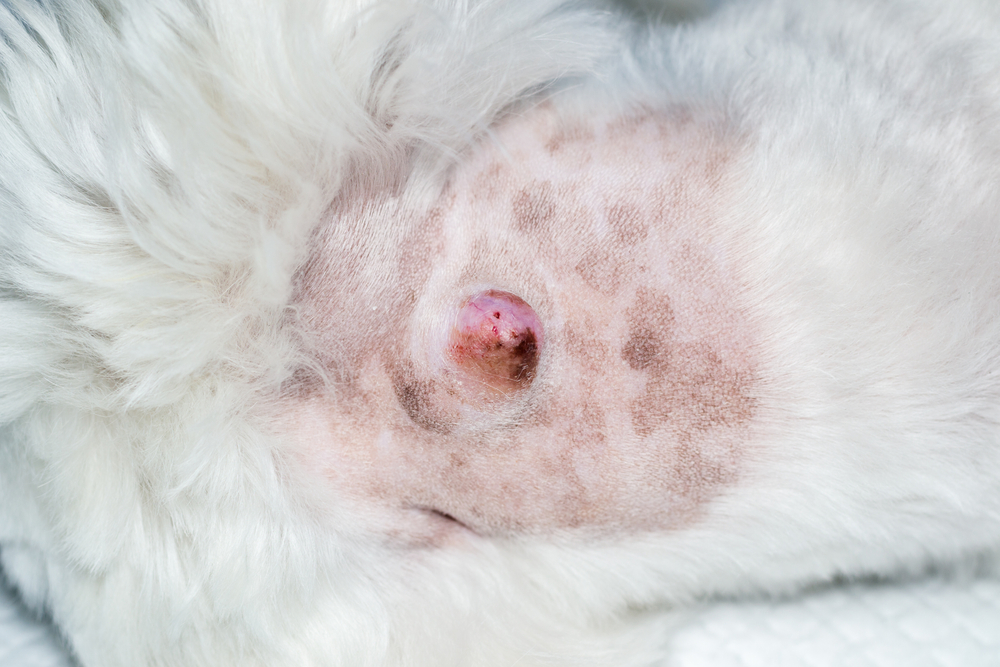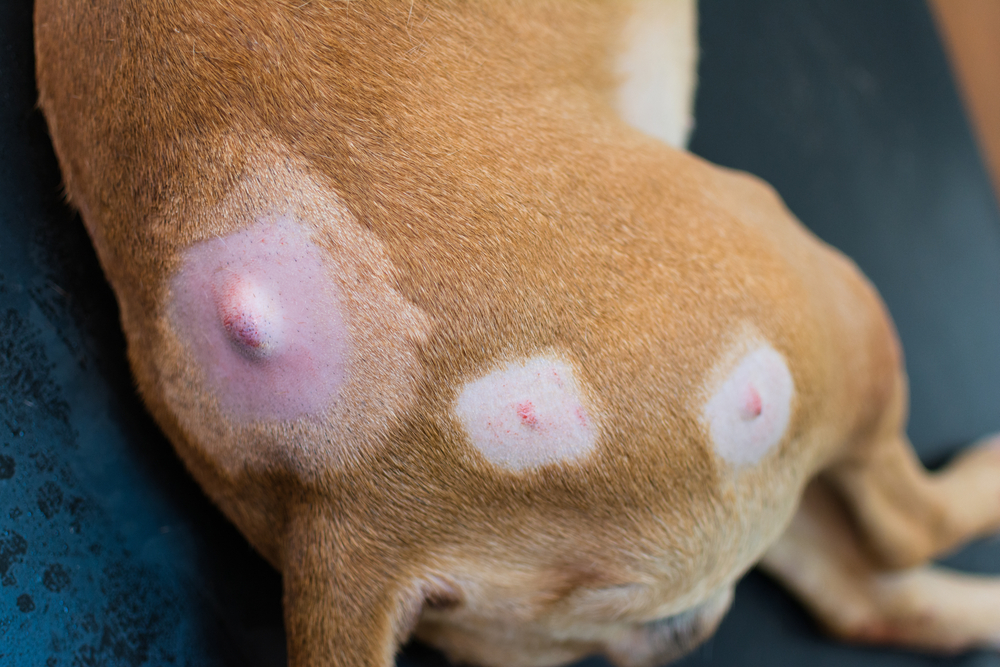Skin Lumps in Pets: What’s Normal and What’s Not
You’re giving your pet a belly rub or brushing their coat, and suddenly- there it is. A lump. Maybe it’s new, maybe it’s bigger than it was last week, or maybe it’s just in a spot you’ve never noticed before. Whatever the case, it’s enough to make your stomach drop.
At Guam Pet Hospital, we understand how nerve-racking it can be to discover a lump or bump on your pet. But we also know that not all lumps are bad news. Our goal is to help you understand what these masses might mean, when to take action, and how to stay ahead of potential issues.
What Are Skin Masses?
Skin masses are any abnormal growths or swellings on or just under the skin. They can vary widely in size, texture, and appearance:
- Small and soft, or large and firm
- Smooth or irregular in shape
- Moveable or fixed in place
- Painless or tender to the touch
Some are benign (harmless), while others may be malignant (cancerous). Some could even be something as simple as a dog elbow callus or a reaction to local trauma. But here’s the key: you won’t know what you’re dealing with until you have it checked out.
Common Causes of Lumps and Bumps
There are many reasons your pet might develop a lump, and not all of them are dangerous. Some of the most common causes include:
- Infections and abscesses: Especially common in cats, abscesses can result from bites or scratches. Purina’s overview of cat abscesses breaks down what to watch for.
- Skin cysts or lipomas: These benign fatty tumors are often soft and slow-growing. Cornell’s guide to lipomas is a helpful resource.
- Allergic reactions: Hives or swelling can appear suddenly due to insect bites, food, or environmental allergens. Learn more about allergy-related hives in dogs.
- Oral papillomas: These wart-like growths are often seen in young dogs and linked to viral infections. This article on oral papilloma virus explains how they spread and when to be concerned.
- Hematomas: Especially in the ears, blood-filled swellings called aural hematomas can result from scratching or head shaking.
Why Early Evaluation Matters
It’s nearly impossible to determine what a lump is just by looking at it. A quick visit to the vet can often answer your biggest questions and help you avoid unnecessary worry. Benign lumps can still grow, rupture, or become irritated, while cancerous ones may spread without visible signs at first.
A simple in-clinic test, like a fine needle aspiration, may allow us to collect a sample and examine the cells under a microscope. If needed, a skin scraping or swab may also be taken. This guide on skin cytology offers a behind-the-scenes look at how we evaluate these samples.
We also recommend routine monitoring, especially in older pets. If you’re doing regular at-home checks, the Humane Society’s guide can help you spot changes early.
Signs a Lump Needs Prompt Attention
Not all masses are cause for alarm, but these signs should be taken seriously:
- Rapid growth
- Change in color, shape, or texture
- Bleeding or discharge
- Pain when touched
- Licking, chewing, or guarding the area
- Interference with walking, eating, or grooming
When in doubt, a veterinary exam is the safest choice.
Understanding the Risk of Cancer
While many skin masses are benign, some can be malignant. Cancerous lumps may grow more aggressively, invade surrounding tissue, or spread to other organs. AAHA’s list of signs of cancer in pets can help you spot early clues.
There are many different types of tumors pets may develop, from mast cell tumors to soft tissue sarcomas and anal sac carcinomas. This overview of cancer types in pets provides a helpful breakdown. You can also explore trusted information and support through the Veterinary Cancer Society’s pet owner resources.
Some cancers are more common in older pets or certain breeds, and while Guam’s climate doesn’t increase cancer risk directly, outdoor pets here are more exposed to sunlight, grass awns, ticks, feral and wild animals, and other environmental hazards. Grass awns, also known as foxtails, can result in abscesses; ticks can cause firm, itchy, inflammatory lumps or enlarged lymph nodes. Learn more about foxtails and the risks they pose, especially if your pet spends time in brushy or overgrown areas.
What We Can Do at Guam Pet Hospital
At Guam Pet Hospital, we focus on clear diagnostics and practical care tailored to what we have available. Most skin masses can be diagnosed using:
- Physical exam and history
- Fine needle aspiration (FNA)
- Biopsy, if needed
- Basic labwork to assess overall health and infection risk
We focus on identifying the nature of the lump, determining if it should be removed, and creating a treatment plan based on your pet’s age, comfort, and overall health.
If a mass needs removal, we perform surgical excision with local or general anesthesia depending on the size and location. In some cases, we may also monitor lumps over time, especially if they appear benign and aren’t causing discomfort.
Keeping Your Pet Comfortable
Skin masses- even benign ones- can impact your pet’s comfort and behavior. You may notice your pet is less playful, reluctant to be groomed, or more sensitive when touched. Some pets start to withdraw or hide, while others become clingy.
If a lump is interfering with your pet’s daily activities, causing grooming challenges, or resulting in repeated licking or trauma, it’s time for us to take a closer look. Certain masses, like anal sac tumors, can go unnoticed until they cause discomfort during bathroom breaks or scooting behavior.

Preventing Future Issues
While not all lumps can be prevented, there are steps you can take to reduce your pet’s risk:
- Perform regular at-home checks- just running your hands over their body once a week can help spot changes.
- Use flea and tick preventives consistently. The CDC’s tips on preventing ticks are especially relevant for Guam’s tropical climate.
- Stick with regular wellness exams so we can catch changes before they become problematic.
- Feed a high-quality diet and keep your pet at a healthy weight to support skin and immune health.
We’re Here for You
Finding a lump on your pet doesn’t mean bad news- but it does mean it’s time to get answers. Whether it’s small and harmless or something that needs attention, the sooner we know what we’re dealing with, the better we can help.
If you’ve noticed a new bump or want to follow up on a lump you’ve been monitoring, schedule an appointment or learn more about our services. We’re here to help you make informed, compassionate choices for your pet- every step of the way.








Leave A Comment